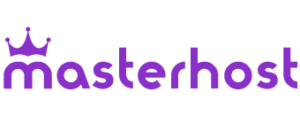Cracking the Code: Key Indicators and Metrics for an Airbnb Investment
Introduction
Embarking on an Airbnb investment can feel like stepping into a labyrinth of numbers and percentages. What do they all mean, and how do they impact your bottom line? Relax; we’ve got your back. In this detailed guide, we’ll illuminate the Key Indicators and Metrics for an Airbnb Investment and help you navigate your way to profitable hosting.
Key Indicators and Metrics for an Airbnb Investment
For those who wonder, “What are the key indicators and metrics for an Airbnb investment?” Here’s the answer. The world of Airbnb investment isn’t just about having a pretty property to rent. It’s a data-driven domain, and understanding these metrics and indicators is akin to knowing the rules of the game. Let’s dive right in!
1. Occupancy Rate: The Heartbeat of Airbnb Investment
The occupancy rate, a fancy term that just means the proportion of time your property is rented out, is the lifeblood of your Airbnb investment. Having an in-demand property is all well and good, but if it’s not occupied, you’re not earning. Here’s the math: the higher the occupancy rate, the higher your revenue.
How to Boost Your Occupancy Rate
There are countless ways to pump up your occupancy rate, from competitive pricing to appealing property photos. But don’t just take our word for it. A study from data analytics company Priceonomics found that listings with professional photos saw a 40% increase in earnings and a 24% increase in occupancy rates. That’s the power of a good first impression!
Explore Airbnb Property Management Services provided by MasterHost:
Professional Airbnb photography
Airbnb price optimization for vacation rentals
2. Average Daily Rate (ADR): Pricing Your Way to Profit

ADR is the average price per rented room per day. Sounds simple, right? But here’s the catch – setting the perfect price isn’t as straightforward as it might seem. Set it too high, and you might scare off potential guests; set it too low, and you leave money on the table.
Nailing the Perfect ADR
A little market research can go a long way. Check out what similar properties in your area are charging, and consider factors like seasonality, special events, and local demand. Dynamic pricing tools can also be a godsend for adjusting your rates based on market fluctuations.
3. Cash-on-Cash Return: Your ROI in Disguise
CoC return is simply the net income from your property divided by the total cash investment. Think of it as your return on investment (ROI), Airbnb style. A higher CoC return means a better ROI, but remember, the property’s location, amenities, and appeal to guests all play a significant role in pushing this figure upward.
What is a good Airbnb return on cash? It varies. The location and type of property are two variables that affect what constitutes a solid cash-on-cash return. However, a cash-on-cash return from Airbnb that is desirable should be at least 8%.
5 Proven Strategies to Double Your Cash-on-Cash Return in Airbnb Rentals
Maximizing Your Cash-on-Cash Return
Attention to detail is key here. Small improvements like high-speed Wi-Fi, a fully-equipped kitchen, or a cozy patio can drastically enhance your property’s appeal and, by extension, your CoC return.
4. Cap Rate: Telling the Future of Your Investment

The capitalization rate, or cap rate, is used to estimate the investor’s potential return on their investment. This figure is calculated by dividing the property’s net operating income (NOI) by its market value. The higher the cap rate, the better the investment – but only if you plan on buying the property outright. If you’re taking out a mortgage, the cash-on-cash return will be a more accurate reflection of your earnings.
Understanding Your Cap Rate
To boost your cap rate, look for properties in areas with high rental demand but low property prices. Just be sure to factor in other considerations like property management costs, maintenance expenses, and potential vacancy periods.
5. Internal Rate of Return (IRR): The Long Game of Airbnb Investing
IRR is a metric used to estimate the profitability of potential investments. It represents the annual growth rate that makes the net present value (NPV) of all cash flows equal to zero. The higher the IRR, the more desirable the investment.
Making Sense of IRR
Since IRR considers the time value of money, it’s an excellent metric for long-term investors. If you’re planning on buying a property, renovating it, and then renting it out on Airbnb, IRR will help you understand the potential return on your investment over time.
6. RevPAR: A Tale of Revenue and Possibility
Multiplying your ADR by your occupancy rate yields Revenue Per Available Room (RevPAR), a performance metric used in the hospitality sector. According to a 2021 report by AirDNA, the global average RevPAR for Airbnb was around $81.
RevPAR: More Than Just A Number
Improving your RevPAR isn’t just about adjusting your prices or occupancy rates; it’s also about refining your overall hosting strategy. Offering exceptional guest experiences and maintaining positive reviews can help you stand out in the crowded Airbnb market.
- A Guidebook to Awesome Airbnb Reviews
- The Art of Generating Airbnb Guest Reviews for Superior Ranking
7. Operating Expenses: The Hidden Costs of Airbnb Investment
Operating expenses include all the costs associated with running your Airbnb property, from cleaning and maintenance to Airbnb’s service fees. According to a report by iPropertyManagement, the average Airbnb host spends about 20% to 30% of their rental income on operating expenses.
Airbnb Success: Mastering Costs and Expenses
Slicing Your Operating Expenses
While some operating costs are unavoidable, there are areas where you can save. Using energy-efficient appliances, for example, can reduce utility costs. Additionally, adopting a preventative maintenance approach can help avoid costly repairs down the line.
8. Acquisition Costs: The Price of Entering the Game
The acquisition cost is the total amount spent to acquire the property, including the purchase price, closing costs, and renovation expenses. As per Zillow, the median home price in the U.S. is $346,270, not including closing or renovation costs.
Reducing Acquisition Costs: Is It Possible?
To reduce acquisition costs, consider properties in emerging markets where prices may be lower. Alternatively, buying a fixer-upper at a lower price and renovating it can potentially lead to significant savings.
9. Rental Yield: The Annual Profit Metric

The rental yield is the annual rental income as a percentage of the property’s total cost.
Driving Up Your Rental Yield
Increasing your rental yield comes down to two main strategies: boosting your rental income or decreasing your property’s cost. The former can be achieved through strategic pricing and providing a stellar guest experience, while the latter may involve purchasing properties in more affordable locations.
Mastering the Art of Guest Satisfaction in Your Airbnb Venture
10. ROI: The Endgame of Your Airbnb Investment
Return on Investment (ROI) is the ultimate metric for evaluating the efficiency of an investment. According to a 2023 survey by AirDNA, the average ROI for an Airbnb property was about 12%.
Maximizing Your ROI
To maximize your ROI, consider using a property management service like MasterHost to streamline operations and enhance guest experiences. Furthermore, optimizing your listing’s visibility through SEO can help attract more bookings and increase revenue.
By familiarizing yourself with these key indicators and metrics for an Airbnb investment, you can make informed decisions that bolster your profitability and success in the Airbnb market.
Conclusion
Investing in Airbnb is a dynamic and complex affair. However, with the knowledge of these key indicators and metrics, you can navigate the landscape confidently. Remember, every property and market is unique, and what works for one might not work for another. The trick is to adapt and optimize your approach based on these metrics. From occupancy rates and ADR to acquisition costs and ROI, each of these metrics provides a unique perspective on your Airbnb investment. They act as a compass, guiding you to make informed decisions and build a profitable portfolio. As an Airbnb host, your journey is one of constant learning and growth. So embrace the numbers and let them lead you to your investment goals.
FAQs

1. What is RevPAR and why is it important?
RevPAR, or Revenue Per Available Room, combines your average daily rate (ADR) and occupancy rate into one metric. It’s important because it gives a snapshot of both your pricing strategy and the demand for your property.
2. How can I reduce operating expenses for my Airbnb?
You can reduce operating expenses by using energy-efficient appliances, adopting a preventative maintenance approach, or automating guest communication to save time and resources.
3. Are acquisition costs a significant factor in Airbnb investment?
Yes, acquisition costs, which include the purchase price and renovation expenses, form a significant part of your investment. They directly affect your return on investment and cash-on-cash return.
4. What does rental yield tell me about my Airbnb property?
Rental yield provides a percentage-based assessment of your annual rental income relative to your property’s total cost. It’s a useful metric for comparing the profitability of different properties.
5. How can I improve my Airbnb investment’s ROI?
Improving your ROI can involve various strategies, such as increasing rental income through optimized pricing, reducing operating or acquisition costs, and enhancing guest experiences to boost demand and occupancy rates.
6. What role do key indicators and metrics play in Airbnb investing?
Key indicators and metrics provide valuable insights into your property’s performance and the profitability of your investment. They can guide your decisions on pricing, improvements, marketing, and overall investment strategies.












